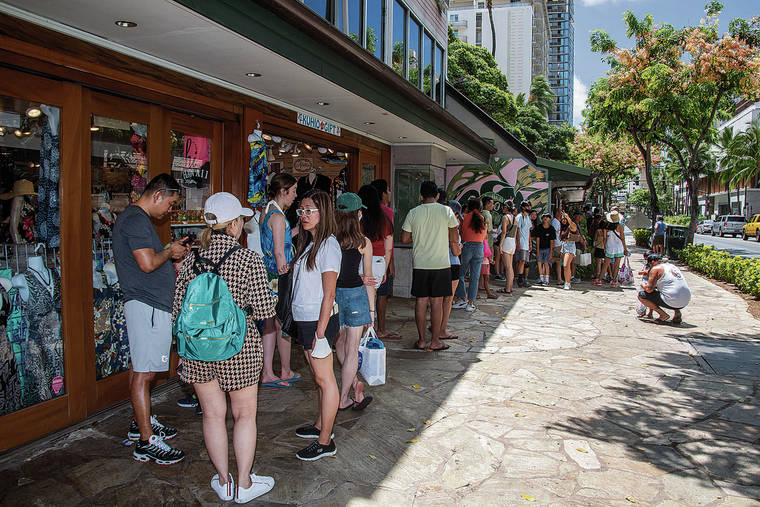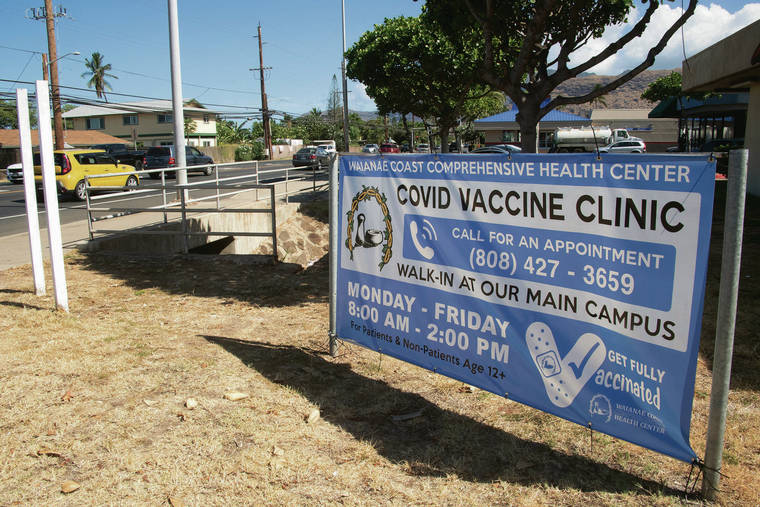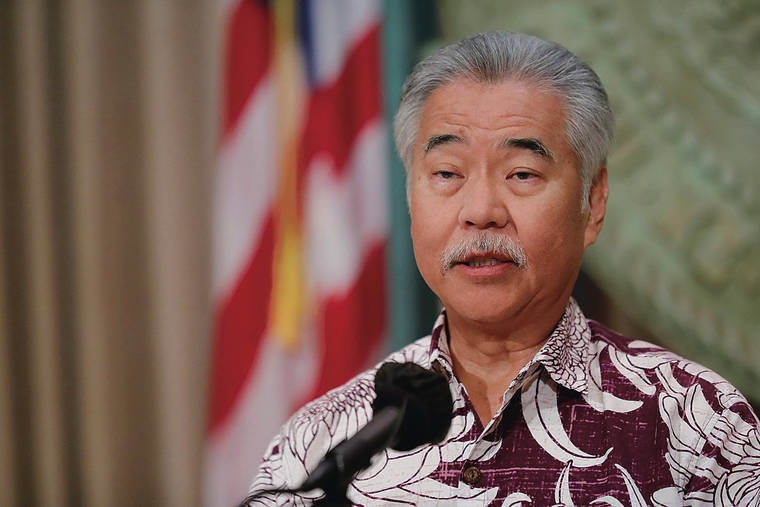Gov. David Ige defends most restrictive COVID regulations in U.S.

CRAIG T. KOJIMA / CKOJIMA@STARADVERTISER.COM
Customers waited to dine Wednesday at a Waikiki restaurant on Kuhio Avenue.

CRAIG T. KOJIMA / CKOJIMA@STARADVERTISER.COM
The Waianae Coast Comprehensive Health Center offers vaccine shots in Waianae.

JAMM AQUINO / JUNE 21
Gov. David Ige, seen here during a news conference at the state Capitol, said that he fears another spike in COVID-19 cases because of the delta variant. “The delta variant will become the dominant variant in this country in a matter of weeks,” he said. “We do know that (being restrictive) has helped us maintain the lowest infection rate in the country.



Gov. David Ige on Thursday defended Hawaii’s COVID-19 rules, the most restrictive in the nation, saying that the Delta variant continues to spread among those who are not vaccinated and that he worries about a repeat of a Fourth of July 2020 spike in COVID-19 cases.
“I do know that I am the only state that has not fully reopened,” Ige told reporters Thursday. “The delta variant will become the dominant variant in this country in a matter of weeks. We do believe that it’s prudent at this time to maintain the restrictions, especially the mandatory quarantine for incoming travelers. We do know that that has helped us maintain the lowest infection rate in the country and restart our visitor industry in a safe way.”
Ige continued to urge residents to get free vaccinations and said that “vir- tually” all of Hawaii’s new COVID-19 cases are being spread among those who are still not inoculated.
As Hawaii tourism continues to rebound and residents flock to public spaces, Ige urged caution.
“As you may recall, it was Fourth of July weekend last year that really accelerated the growth in the cases here in the islands,” Ige said. “For those who are not vaccinated, virtually all of the cases that we are seeing today are in unvaccinated individuals. … Virtually anywhere in the state, you are minutes away from a vaccination center.”
Asked about the possibility of loosening 6-foot, indoor social distancing requirements, Ige said it’s being discussed but that restaurants continue to be a source for new COVID-19 cases.
Don't miss out on what's happening!
Stay in touch with breaking news, as it happens, conveniently in your email inbox. It's FREE!
Ige and the four county mayors previously announced that the state is scheduled to move into a less restrictive Tier 5 system Thursday that will allow indoor and outdoor events to welcome the greatest number of people in well over a year — whether or not Hawaii reaches a statewide fully vaccinated rate of 60%.
At some point, essentially all of the restrictions will be lifted once Hawaii reaches a fully vaccinated statewide rate of 70%.
For now, masks continue to be required indoors, and Ige said he continues to wear a mask indoors and outdoors and encourages everyone to do the same to curb the spread of COVID-19.
Hawaii is expected to reach a statewide vaccination rate of 60% before or around Thursday, which is expected to trigger far less restrictive travel and gathering levels:
>> Fully vaccinated U.S. travelers flying domestically — including island residents returning home — will be allowed to bypass Hawaii’s quarantine and pre-travel restrictions, as long as they upload their vaccination records to the state’s Safe Travels website and arrive with a hard copy of their vaccination records. All current travel restrictions will remain in place until Thursday.
>> The number of people allowed to attend social gatherings will increase from the current level of 10 people indoors to 25; the size of outdoor gatherings will increase to 75 people from 25.
>> Restaurants will be allowed to increase their seating capacities to 75% of their maximum allowed capacity, as long as they seat no more than 25 customers indoors and 75 outdoors.
>> Masks will continue to be required indoors until Hawaii reaches a 70% vaccination rate.
On Thursday the state Department of Health reported one new coronavirus-related death and 49 new confirmed and probable infections statewide, bringing the state’s totals since the start of the pandemic to 518 fatalities and 37,807 cases.
The latest death was a woman in her 80s on Oahu with an underlying condition who was hospitalized.
The state’s official coronavirus-related death toll now includes 401 fatalities on Oahu, 57 on Maui, 55 on Hawaii island, two on Kauai and three Hawaii residents who died outside the state.
The U.S. coronavirus- related death toll is now over 604,000, and the nationwide infection tally is more than 33.6 million.
Thursday’s confirmed and probable infection count by island included 35 new cases on Oahu, seven on Kauai, two on Hawaii island and five Hawaii residents diagnosed outside the state.
State health officials began including probable infections in its total case counts last month. Probable infections include people who never received a confirmatory test but are believed to have had the virus because of their known exposure and symptoms or because of a positive antigen test.
The numbers of confirmed and probable coronavirus cases by island since the start of the outbreak are 27,909 on Oahu, 4,696 on Maui, 3,267 in Hawaii County, 368 on Kauai, 115 on Lanai and 80 on Molokai. There are also 1,372 Hawaii residents who were diagnosed outside the state.




